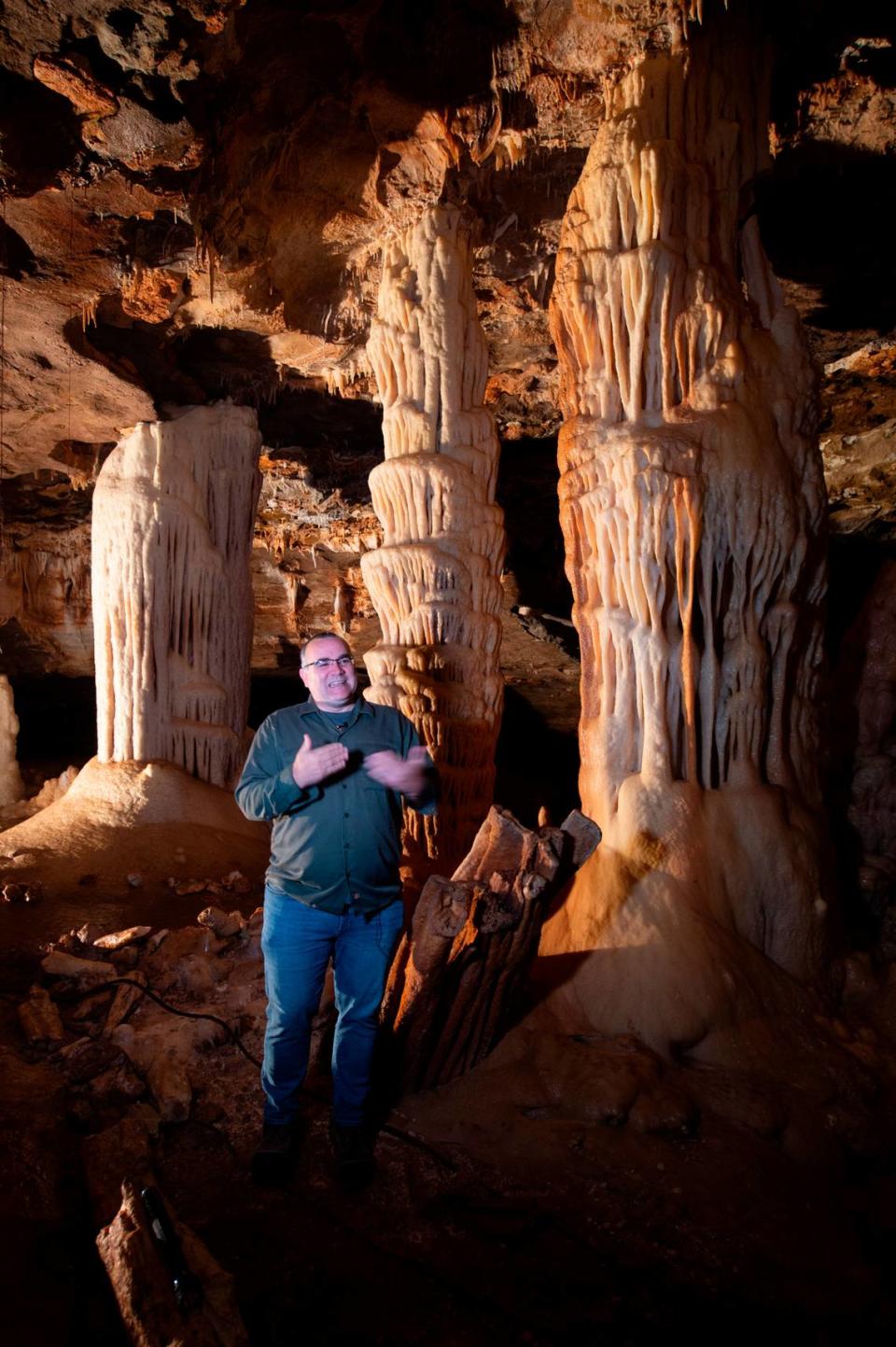7 things you may not know about Missouri’s caves
Here are some facts you may not know about Missouri’s caves:
▪ Missouri is known as The Cave State, probably because it has over 7,000 documented caves.
▪ Why so many caves? One word: karst. It’s a system formed by the kind of limestone common in the Midwest, especially the Ozarks. As bedrock goes, it’s relatively porous. So as rainwater soaks in, it forms carbonic acid, creating holes and fissures. Caves, springs and sinkholes result.
▪ Here’s how to remember the names of a couple of notable cave formations: Stalactites hold “tight” to the ceiling. Stalagmites “might” reach it from the cave floor.
▪ Formations grow slowly, taking 30 to 100 years to grow just an inch. Magnesium and other minerals add color to the mix.
▪ Most of the state’s caves are privately owned. A few are operated by the Department of Natural Resources. In 2016, the Missouri Caves Association reported that roughly 750,000 people passed through their gates.
▪ In the 1930s, Lester B. Dill owned Meramec Caverns in Stanton, southwest of St. Louis. Roadside America credits Dill with devising a new way to advertise his Route 66 attraction — bumper stickers.
▪ Riverbluff Cave in Springfield was discovered on Sept. 11, 2001, when a road construction crew noticed a small opening. It led into the oldest Ice Age fossil cave in North America. Riverbluff isn’t open to the public, but fossils and minerals found in it are displayed nearby at the Missouri Institute of Natural Science. Matt Forir, the geologist who first explored the cave., described his experience this way:
“When you’re in a place with such a deep, rich prehistoric history, if you’re not in awe there’s something wrong with you.”


